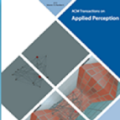Unsupervised domain adaptation has recently emerged as an effective paradigm for generalizing deep neural networks to new target domains. However, there is still enormous potential to be tapped to reach the fully supervised performance. In this paper, we present a novel active learning strategy to assist knowledge transfer in the target domain, dubbed active domain adaptation. We start from an observation that energy-based models exhibit free energy biases when training (source) and test (target) data come from different distributions. Inspired by this inherent mechanism, we empirically reveal that a simple yet efficient energy-based sampling strategy sheds light on selecting the most valuable target samples than existing approaches requiring particular architectures or computation of the distances. Our algorithm, Energy-based Active Domain Adaptation (EADA), queries groups of targe data that incorporate both domain characteristic and instance uncertainty into every selection round. Meanwhile, by aligning the free energy of target data compact around the source domain via a regularization term, domain gap can be implicitly diminished. Through extensive experiments, we show that EADA surpasses state-of-the-art methods on well-known challenging benchmarks with substantial improvements, making it a useful option in the open world. Code is available at https://github.com/BIT-DA/EADA.
翻译:不受监督的领域适应最近已成为将深神经网络推广到新的目标领域的有效范例,然而,仍然有巨大的潜力可以加以利用,以达到完全监督的业绩。在本文件中,我们提出了一个新的积极学习战略,以协助目标领域的知识转让,称为积极领域适应。我们从一种观察开始,即能源模型在培训(源)和测试(目标)数据来自不同分布时表现出了自由能源偏向。受这一内在机制的启发,我们从经验中发现,简单而高效的能源基取样战略在选择最有价值的目标样本方面比现有的需要特定结构或计算距离的方法更有帮助。我们的算法,即基于能源的积极域适应(EADA),查询将域特性和实例不确定性都纳入每个选择周期的延迟数据组。与此同时,通过正规化术语将目标数据集的免费能量组合在源领域周围加以调整,可以隐含地缩小领域差距。通过广泛的实验,我们显示EAADADA超过众所周知的、具有重大改进的、具有挑战性的基准,使它成为开放世界ADADA/C守则的一个有用选项。




